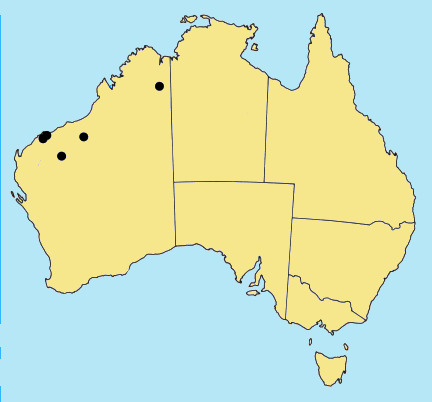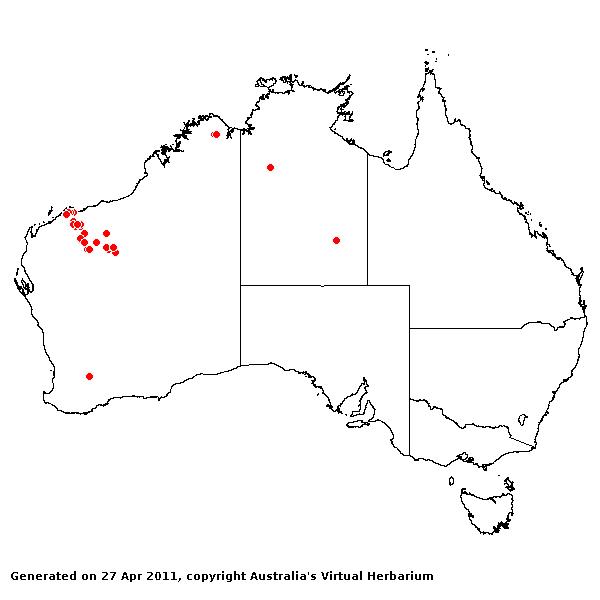Eriachne tenuiculmis Hartley. J. Linn. Soc., Bot 52: 346 (1942).
Classification. (GPWG 2001) : Subfamily Micrairoideae. Eriachneae.
Basionym and/or
Replacement Name: Eriachne
pallida F. Muell. ex Benth., Fl. Austral. vii. 631. (1878) non Nees
(1841).
Type of Basionym or
Protologue Information: Australia, Dampier Archipelago: Walcot 75 in Herb. Mueller (K holo, MEL).
Recent synonyms:
E. pallida.
Key references
(books and floras): [1878] G.Bentham, Flora Australiensis 7 (631as Eriachne
pallida), [1952] C.A.Gardner, Flora of Western Australia 1 Gramineae
(49), [2002] D.Sharp & B.K.Simon, AusGrass, Grasses of Australia.
Illustrations:
[2005] K.Mallet (ed.), Flora of Australia 44B: Poaceae 3 (Fig.
23F-G).
Habit.
Perennial. Culms stature slender to delicate, 60–65 cm tall, wiry. Mid-culm
nodes glabrous or pubescent or bearded. Lateral branches branched. Ligule a
fringe of hairs. Leaf-blades 9 cm long, 1.5–2 mm wide. Leaf-blade surface
scabrous, glabrous.
Inflorescence.
Inflorescence compound, a panicle. Panicle linear, 4–10 cm long, 0.5–1.5 cm
wide.
Spikelets.
Spikelets pedicelled. Fertile spikelets 2-flowered, both fertile, comprising 2
fertile floret(s), without rachilla extension, ovate, laterally compressed, 8
mm long.
Glumes.
Glumes similar, thinner than fertile lemma. Lower glume ovate, membranous,
without keels, 9–11 -nerved. Lower glume surface glabrous. Upper glume ovate,
5–7 mm long, membranous, without keels, 9–11 -nerved. Upper glume surface
smooth, glabrous.
Florets.
Fertile lemma 7–10 mm long, without keel, 5–7 -nerved. Lemma surface glabrous
or indumented. Lemma apex muticous. Palea apex entire or dentate, muticous.
Grain 4.5 mm long.
Continental
Distribution: Australasia.
Australian
Distribution: Western Australia.
Western Australia:
Fortescue.
Notes.
Distinguished by pubescent base thickened by cataphylls, thickened rigid blades
with prickly margins, loose linear panicles, glabrous glumes, floret longer
than glumes, bisulcate relatively awnless lemma with long-ciliate submargins,
and an almost entirely glabrous palea. Eriachne tenuiculmis appears to
be rare in occurrence and isolated in its relationships.
Endemic.
W.A. Stony creek beds and gullies, and crevices in Maddina basalt. Flowers and
fruits May-June (late-autumn and early-winter).



